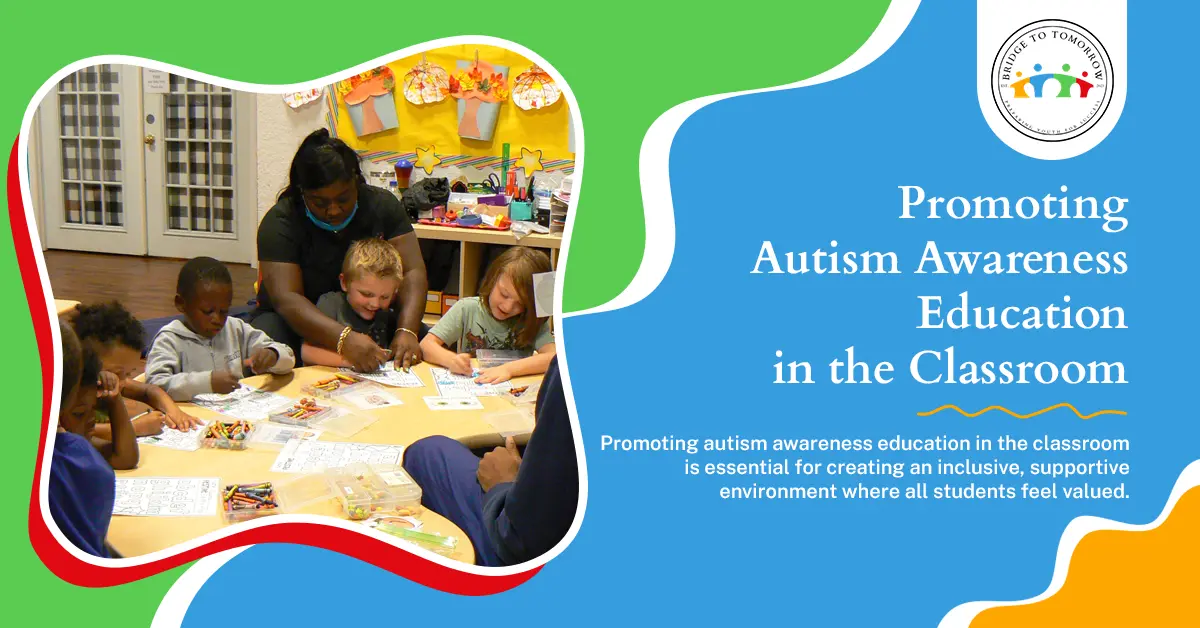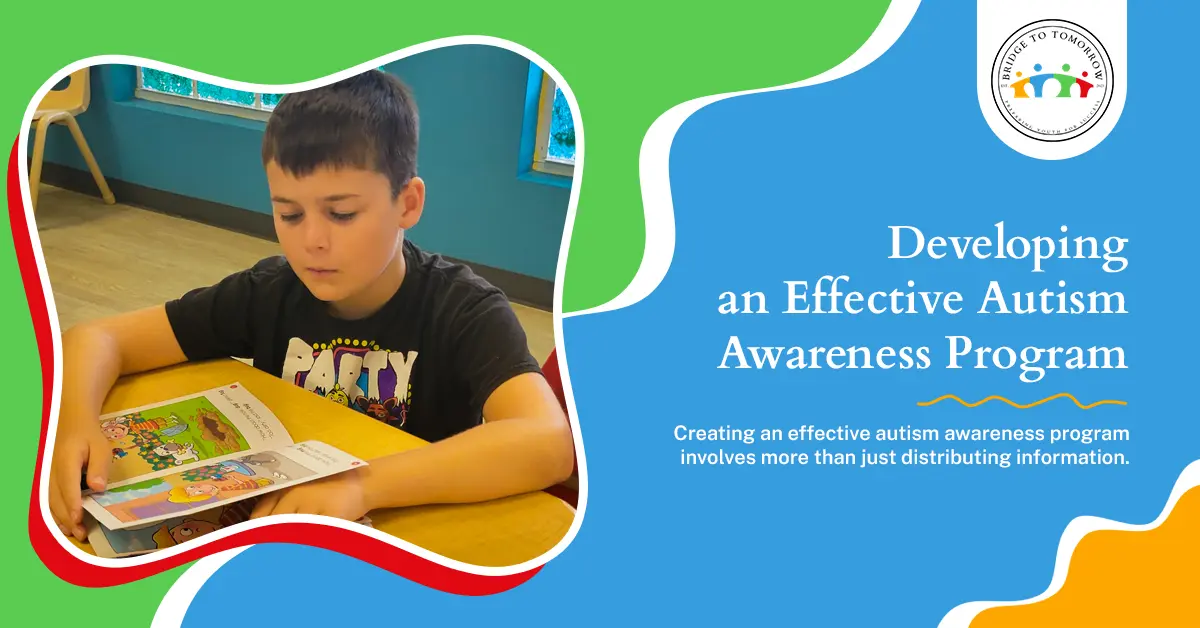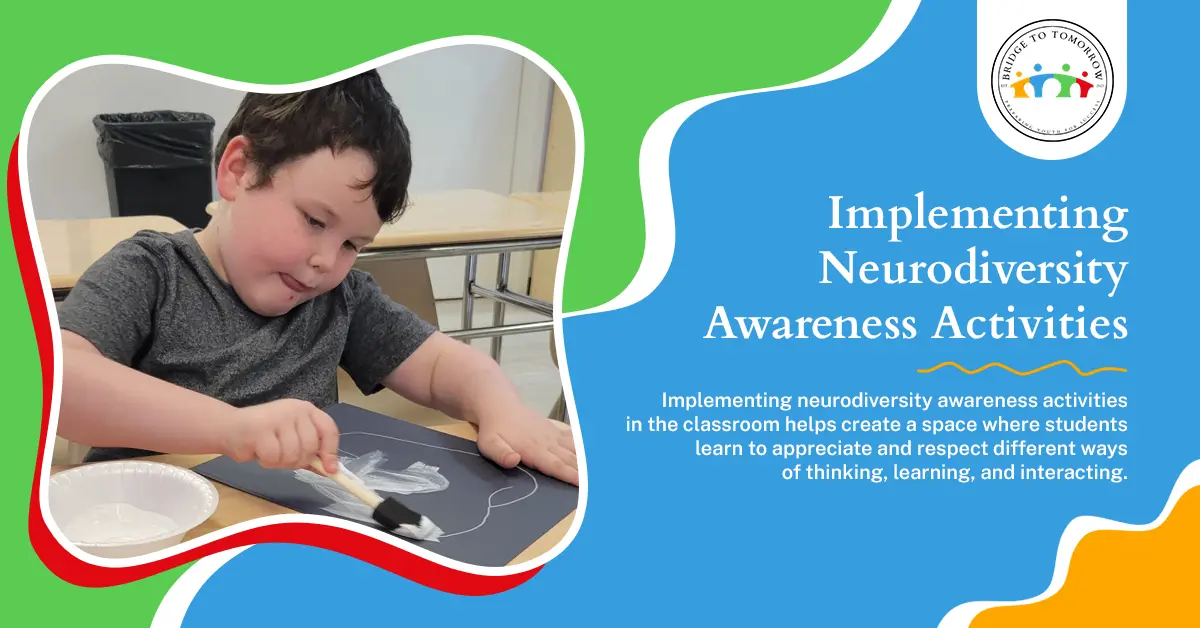Neurodiversity awareness is crucial in creating an inclusive and supportive educational environment for all students. By understanding and embracing neurodiversity, teachers can implement strategies that cater to the specific learning styles of neurodivergent students, such as those with ADHD, autism, or dyslexia.
This awareness fosters a classroom culture where differences are celebrated, and everyone feels empowered to succeed. This guide will explore actionable strategies for teachers to promote neurodiversity awareness and create a learning space that nurtures every student’s unique potential.

Promoting autism awareness education in the classroom is essential for creating an inclusive, supportive environment where all students feel valued. Teachers have a critical role in fostering understanding by incorporating autism awareness into their lesson plans and encouraging open discussions.
Autism awareness education helps students grasp the strengths and challenges that individuals with autism face. This understanding fosters a more accepting classroom atmosphere and combats misconceptions. To introduce autism awareness effectively, teachers can:
These approaches lay the groundwork for a compassionate and inclusive classroom culture.
Teachers can seamlessly incorporate autism awareness into their lesson plans using various strategies. These include:
Implementing these strategies normalizes conversations around autism and encourages students to view differences as strengths.
Implementing autism awareness education has a profound impact on classroom dynamics. When students understand and appreciate neurodiversity, they are likelier to show empathy, kindness, and peer support. Benefits of a compassionate classroom include:
By actively promoting autism awareness education, teachers can build a stronger, more cohesive classroom community where every student is allowed to succeed.

Creating an effective autism awareness program involves more than just distributing information. It requires strategic planning, collaboration, and active participation from educators, students, and parents to build a truly inclusive and supportive learning environment.
Before launching an autism awareness program, defining the goals and desired outcomes is essential. Establishing clear objectives helps in creating a focused and effective program. Consider setting goals such as:
These goals will guide the program’s development and ensure that every activity aligns with the overall mission of promoting autism awareness.
Collaboration is crucial in building an impactful autism awareness program. Engage with various stakeholders to ensure that the program addresses the diverse needs of the school community. Key stakeholders include:
Collaboration strengthens the program by bringing together diverse perspectives and expertise, making it more comprehensive and practical.
An effective autism awareness program should include various activities to engage students, staff, and parents. Consider incorporating:
These activities create multiple touchpoints for learning and engagement, ensuring that autism awareness is integrated into the school culture.
Assess the effectiveness of the autism awareness program regularly through surveys, feedback, and observation. Ask for input from students, teachers, and parents to identify areas for improvement. Be prepared to adapt the program as needed to ensure it continues to meet the varying needs of the school community.

Implementing neurodiversity awareness activities in the classroom helps create a space where students learn to appreciate and respect different ways of thinking, learning, and interacting. By incorporating engaging activities, teachers can educate students about neurodiversity in a positive and impactful manner, promoting an inclusive mindset.
Workshops are an excellent way to introduce the concept of neurodiversity to students and staff. These workshops should educate participants about various neurodivergent conditions, such as ADHD, autism, dyslexia, and more. Effective workshops might include:
Workshops provide foundational knowledge and set the tone for ongoing discussions about neurodiversity within the school community.
Teachers can integrate neurodiversity awareness into daily classroom activities to reinforce understanding. This can be done through:
Diverse reading materials: Select books and articles featuring neurodiverse characters or authors. Use these materials as the basis for class discussions or book reports.
Incorporating these activities into the curriculum makes neurodiversity awareness an ongoing part of the educational experience.
Hosting school-wide events dedicated to neurodiversity awareness can create a broader impact by engaging the entire school community. Consider implementing events such as:
These events celebrate neurodiversity and provide students, staff, and parents with opportunities to connect and learn together. Implementing these activities ensures that neurodiversity awareness becomes an integral part of the school culture, fostering a supportive setting where all students can thrive.
An inclusive classroom environment ensures that every student feels valued regardless of their learning style or abilities. By implementing strategies that cater to a wide range of needs, teachers can foster a space where neurodiverse students thrive alongside their peers.
Creating flexible lesson plans allows teachers to accommodate different learning styles. Consider using:
These methods help ensure every student can participate and succeed in the classroom.
Utilizing assistive technologies can significantly enhance the learning experience for neurodiverse students. Examples include:
Incorporating these tools makes learning more accessible and empowers students to reach their full potential.
Creating opportunities for peer support helps build a strong sense of community and mutual respect. Implement activities such as:
This collaborative atmosphere fosters academic growth and nurtures social relationships and a deeper understanding among students.
Promoting neurodiversity awareness in education means embracing all students’ diverse strengths and perspectives. Teachers can make a lasting impact by implementing autism awareness education, developing structured programs, and creating inclusive classrooms. These efforts enhance academic experiences and foster compassion, understanding, and acceptance within the school community.
Ready to create a truly inclusive learning environment? Contact Bridge to Tomorrow or call (321) 345-4232 to learn more about supporting neurodiverse students and building a brighter future for all!